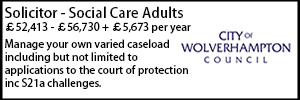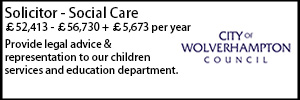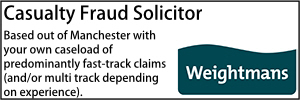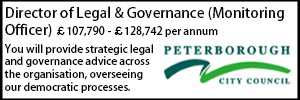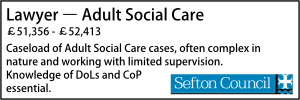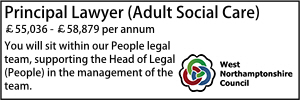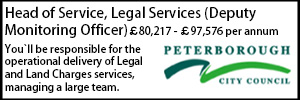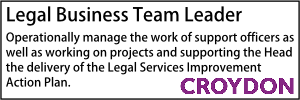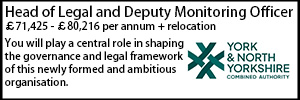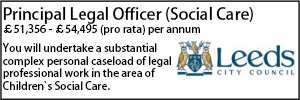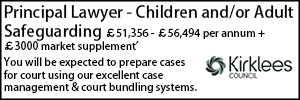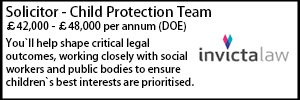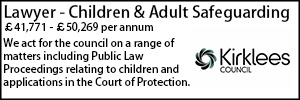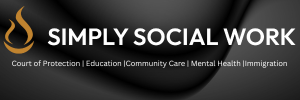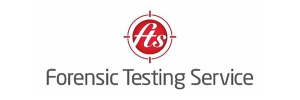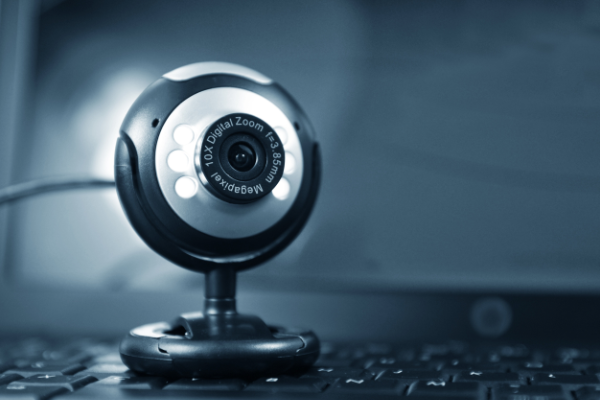
Smile for the Camera?
Annie Sayers gives an overview of the Family Justice Council’s Guidance on covert recordings.
- Details
In May 2025 the Family Justice Council issued guidance on the issue of covert recordings in family proceedings concerning children. It opens at the very outset with Mr Peter Jackson’s (as he then was) words in M v F (Covert Recording of Children) [2016] EWFC 29: “Advances in technology empower anyone with a mobile phone or a tablet to make recordings that would be the envy of yesterday’s spies.”
The aim - is clearly to provide greater consistency in approach to such recordings. It is hoped it will lead to further guidance from a professional body or organisation such as the ICO being issued. It is long awaited with the need having been identified by, the then President, Sir James Munby in Re B (A Child) [2017] EWCA Civ 1579: “…covert recording in the context of the family courts potentially involves a myriad of issues, very few of which, despite all the judgments to which I have referred, have, even now, been systematically considered either at first instance or in this court” at [16].
What is very clearly not intended is to create a guide as to how to achieve covert recordings that will be admissible in Court. The guidance is explicit in that regard and there is certainly no encouragement to parties to seek to adduce covert recordings in family law proceedings.
What are covert recordings? - any recordings made without the express knowledge and permission of the people being recorded, whether by video or audio.
The ease with which any person can now make recordings, on devices of varying sizes, disguises and costs, has led to an increase in the number of people being recorded without their knowledge. In a system whereby decisions are necessarily evidence-based, and where many represent themselves, parties are increasingly driven to seek to prove the allegations they are asserting by way of recording events that they perceive will demonstrate the same.
Types of covert recording - Munby P’s case, Re B, identified at least 3 different categories of covert recording: of children, professionals, and other family members, all of which carry different considerations.
The lawfulness
Whilst public agencies are constrained by a number of laws and regulations (with consequences if they are breached); there is little to constrain a private individual, nor to protect an unknowing individual, from covert recordings being made.
Article 8 provides a right to private life, however, family members are not constrained by the same and so do not owe that duty to one another. Whilst RIPA constrains public bodies, it does not prevent a parent, for example in care proceedings, from recording meetings or conferences.
The exception to the differing rules in respect of private individuals and public bodies is that all recordings made after 25th May 2018 are subject to GDPR/Data Protection Act 2018 provisions and regulation by the ICO. This relates to the storing, retaining and sharing of data, although if such processing occurs in the course of a purely personal or household activity, with no connection to a professional or commercial activity, it will usually be considered to be outside the scope of UK GDPR. To that end, motive is key.
It is worth keeping in mind, however, the warning provided in M v F (Covert Recording of Children) [2016] at [26] that covert recordings made for the purpose of court proceedings may not attract such an exemption, and that once a covert recording is shared with another person or professional body this will amount to a further processing of the data and require a lawful basis under the UK GDPR.
Even if there are not direct legal restrictions on the recording of events, the making of recordings may still involve unlawful activity of a different kind, for example if it amounts to harassment. Re C (A Child) [2015] EWCA Civ 1096 concluded that Courts are “entitled to conclude that the use of recording equipment in the context of the case overall amounts to a form of intimidation and is abusive and is therefore being capable of being the subject of an injunction.”
Why individuals undertake covert recordings
There are many possible reasons. The guidance lists lack of trust, wanting a personal and accurate record, wanting to gather evidence, and wanting to use the recording for other purposes, such as to circulate as part of a campaign or post on social media.
In many instances, if professionals are acting in accordance with their duties, being recorded may not be a concern and allowing such recording may promote a more trusting, meaningful and accurate way of working. If there is transparency about the fact that recording is taking place, greater accuracy and quality of recording may be possible and another party may ask for disclosure of it, although that does not mean that the Court will allow such a recording to be adduced in evidence.
Parents will often record each other, or their children, as a result of their perception that it is the only way to illustrate the behaviour that they are complaining of, however, again there may be unintended consequences of the same with the possibility of the Court finding that such surveillance is distorted and could amount to a form of harassment, control or abuse.
The evidential value
Most of us will have experienced cases where recordings have had probative evidential value, be it for or against the interests of our clients, which have led to a finding or decision one way or another. Munby P, as he then was, acknowledged within Re B that recordings have in recent times evidenced professional malpractice that might otherwise not have been believed. The guidance references various other instances where recordings have been pivotal in establishing important facts. Indeed, I recently experienced a social worker unequivocally denying an (not unusual and unlikely to be believed) allegation from a parent only for it to be heard, as clear as day, in a covert recording.
Set against that, however, are considerations of privacy - for parents, children and professionals - and the consequences for all involved, both foreseeable and unintended. The guidance points to the potential undermining of expert assessment, for example by a psychologist, were it to have been covertly recorded, as a result of the potential influence upon the quality of interaction and the performance and behaviour of the person being assessed.
Recordings of children
We, as practitioners, knew long before Peter Jackson J (as he then was) emphasised that “it is almost always likely to be wrong for a recording device to be placed on a child for the purpose of gathering evidence in family proceedings, whether or not the child is aware of its presence.” The potential consequences for a child’s welfare of being secretly recorded are extremely serious. The parent, in taking such action as to invade the child’s privacy and trust, is unlikely (in most instances) to achieve much more than a demonstration of their own lack of insight in respect of the child’s emotional needs. Even for a child too young to understand at the time decisions are being made, there has to be consideration about how they would feel in the future to discover that they were covertly recorded and that recording was then played to professionals and others within the Court arena. Worse still, if this were to happen in an uncontrolled and unplanned way.
At times, however, the covert recorder risks unintentionally but directly involving the child in the proceedings: whether by virtue of them needing to be represented by a Guardian; informed of matters; or even, in more extreme instances, required to give evidence - inevitably triggering Re W considerations. Where a parent questions a child as to events in order to adduce an account, they risk contaminating or undermining any other probative evidence to the extent that it becomes unreliable to the extent that the allegation may no longer be capable of being proved.
How a practitioner should respond?
In short, with great care! It is important for legal practitioners to be clear about what has been recorded, how and why; what it is purported to evidence; what evidential value it actually offers, including evidence against the interests of the parent making the recording; and how to then to proceed with any attempt to adduce it into evidence. Cafcass advise their FCAs not to listen to/watch any such material until it has been formally adduced into evidence. Very significant caution and care are required if the recordings include intimate images - considered in detail by Mrs Justice Knowles in Re M (Case Management: Intimate Images) [2022] EWHC 986 (Fam).
Case management
The result of all of this is that Courts are spending much increased amounts of time determining the relevance, admissibility and weight of covert recordings. Whilst recording is now relatively easy, the task of determining whether recordings should be allowed and the weight that should be attached to them is much more difficult.
Unsurprisingly, any issue relating to a covert recording should be raised and grappled with at the earliest opportunity - by way of a formal C2 application made on notice to the other party(/ies) setting out the nature, method and relevance of the recording and why it was obtained covertly.
The test for deciding “relevance” has been succinctly expressed as being “logically probative or disprobative of some matter which requires proof” in Director of Public Prosecutions v Kilbourne [1973] 1 All ER 440.
Once satisfied of relevance the suggested probative value should be established, alongside the scope and authenticity of the recording; its integrity and the extent to which its accuracy can be ascertained. In some instances Part 25 forensic interrogation may be required, if necessary and proportionate.
At the case management stage the Court will need to consider the method of disclosure to other parties; ensure full information, including about authenticity, is available; consider the probative value of the evidence; the implications for the welfare of the parties and child/ren; and any consequential costs (for example of transcribing, interrogating etc) involved in adducing a recording.
Covert recordings will almost always be hearsay evidence by their very nature, unless the only asserted probative value is the existence of the recording itself. The Court will need to determine that it is “evidence given in connection with the upbringing, maintenance or welfare of a child” in accordance with the Children (Admissibility of Hearsay Evidence) Order 1993 in order for the rule against hearsay evidence to not apply.
Once admitted into evidence, it is for the Court to determine the weight that can be attached to such a recording, considering questions such as: whether it would have been reasonable and practical for the party adducing the evidence to have produced the original maker as a witness, the contemporaneity of the statement with the occurrence or existence of matters, the extent of the hearsay, the motive/authenticity, integrity and the context.
Does the guidance tell us anything new?
Probably not. It consists of common sense and well established principles, but it serves as a helpful reminder of the risks involved in seeking to gain an evidential advantage, and provides food for thought about the potential benefits in specific scenarios, particularly when professionals are involved, of agreed overt recording.
If, in time, it leads to further guidance from a professional body, all the better.
Annie Sayers is a barrister at Deans Court Chambers.





